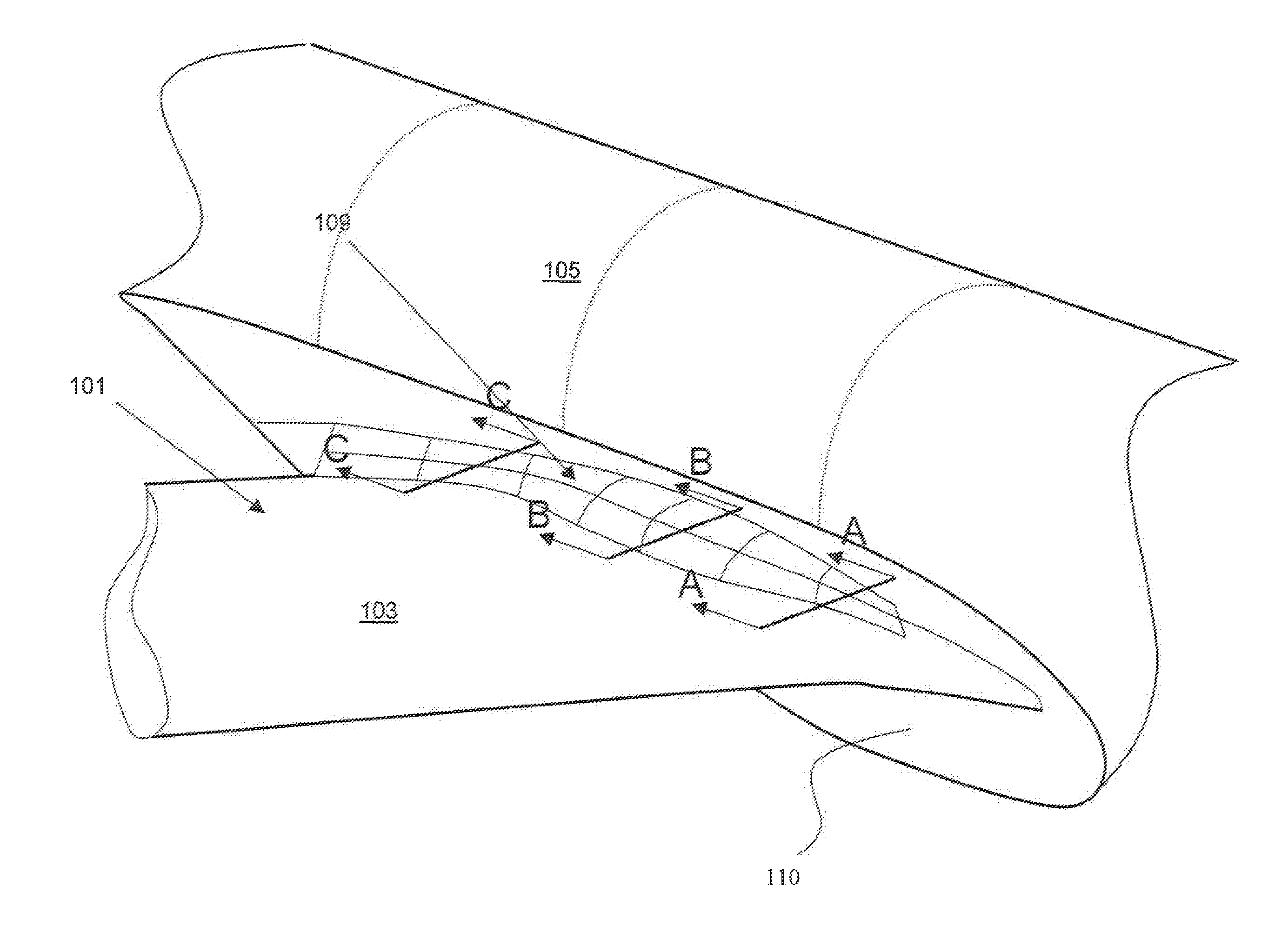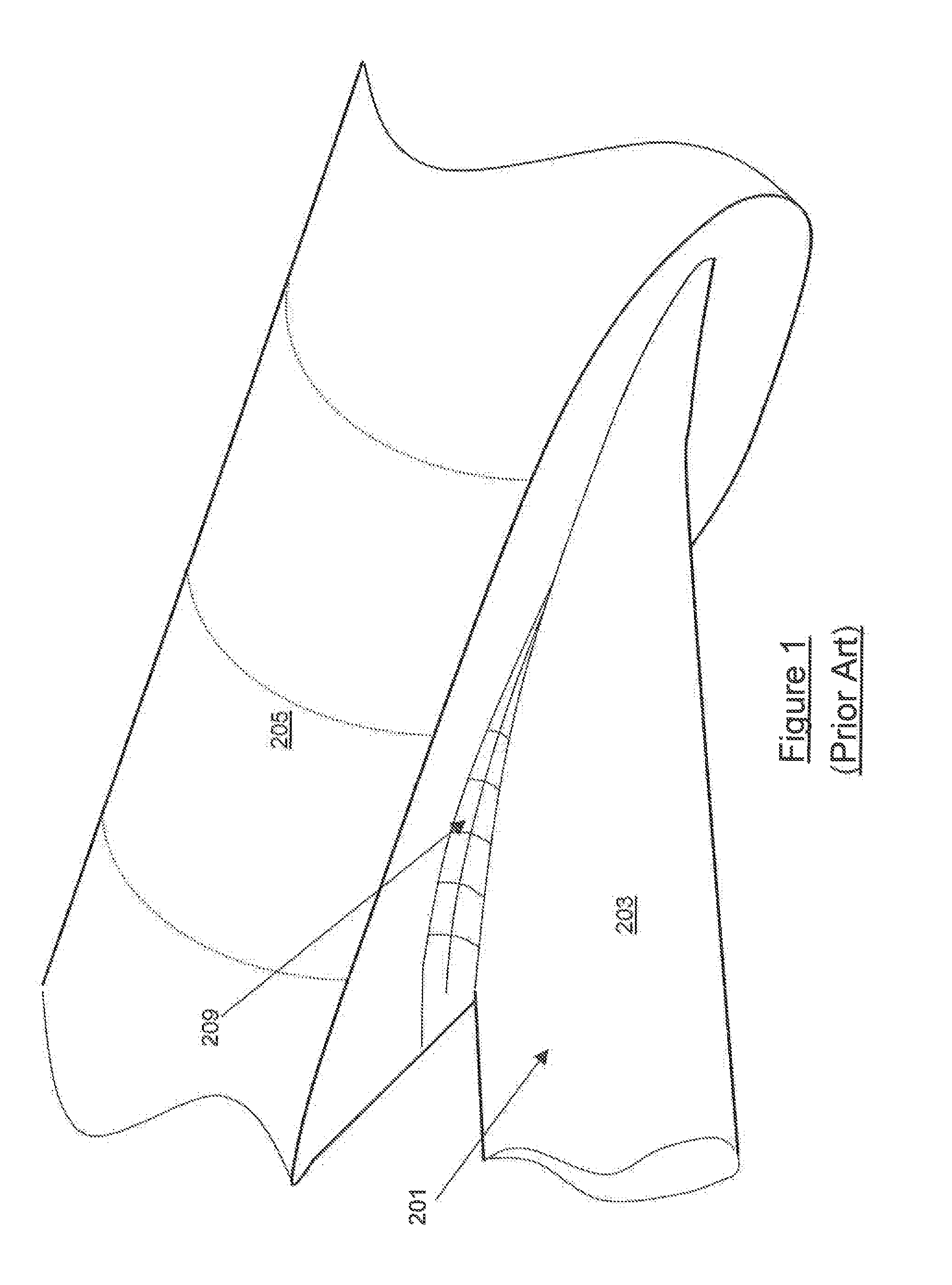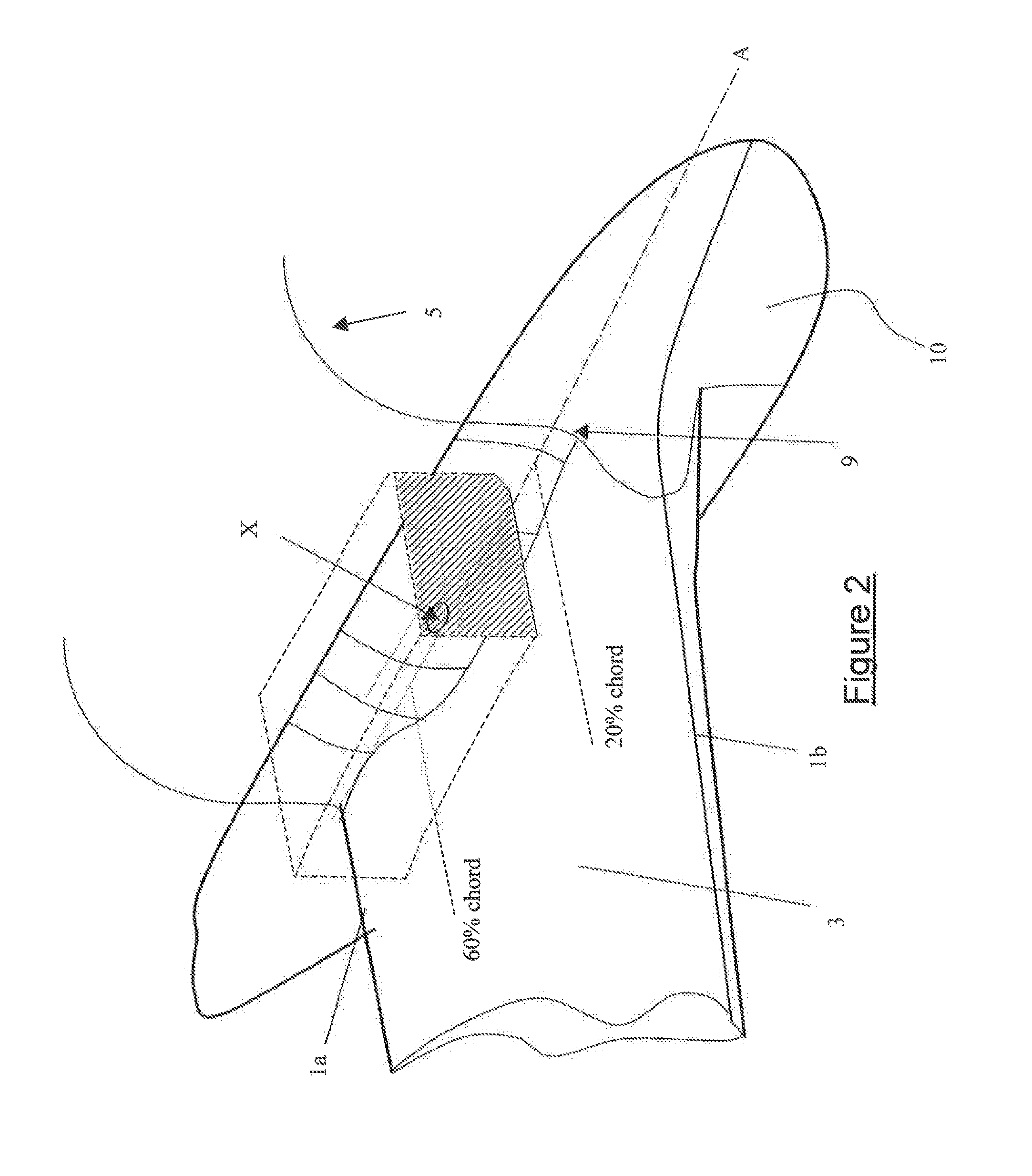Aircraft fairing
a technology for fairings and aircraft, applied in the field of fairings, can solve the problems of limiting the lift that the inner region of the wing generates, and undesirable shocks, and achieve the effect of reducing the amount of li
- Summary
- Abstract
- Description
- Claims
- Application Information
AI Technical Summary
Benefits of technology
Problems solved by technology
Method used
Image
Examples
first embodiment
[0051]FIG. 2 is a perspective view of part of the aircraft according to the invention;
[0052]FIG. 3 is a front view of part of an aircraft according to a first embodiment of the present invention;
[0053]FIGS. 4a and 4b are schematic plan views of the inner wing region showing the typical shock pattern of an aircraft fitted with a known conventional wing root fairing and part of the aircraft according to an embodiment of the invention;
[0054]FIGS. 5a to 5c are plots showing the chordwise pressure distribution at three stations along the wing of the aircraft according to the first embodiment of the invention;
[0055]FIG. 6 is a perspective view of part of an aircraft according to an embodiment of the invention and
[0056]FIG. 7 illustrates the variation of the cross-sectional area of a shock control fairing according to an embodiment of the invention and a traditional wing root fairing.
[0057]As described above FIG. 1 represents a conventional wing root fairing. The skilled person in the art ...
second embodiment
[0072]FIG. 6 is a perspective view of part of an aircraft according to the invention. The aircraft comprises a wing 101 having an upper surface 103 which forms as junction with the fuselage 105 at the wing root. The aircraft also comprises a fairing 109 (shown in FIG. 6 as a computer generated mesh) located on the upper surface 103 of the wing 101 at the junction.
[0073]FIG. 7 represents a comparison of the variation of the cross-sectional area of a shock control fairing according to the embodiment of FIG. 6 relative to a conventional wing root fairing. The cross-sectional area of the conventional fairing (dashed line) can be seen to increase from a minimum at the wing leading edge (0% root chord) to a maximum at the wing trailing edge (100% root chord). The fairing according to an embodiment the invention has a maximum cross-sectional area in the mid-chord region with the area increasing along the length of the wing root from the trailing edge to the mid-chord region and then decrea...
PUM
| Property | Measurement | Unit |
|---|---|---|
| dry weight | aaaaa | aaaaa |
| dry weight | aaaaa | aaaaa |
| height | aaaaa | aaaaa |
Abstract
Description
Claims
Application Information
 Login to View More
Login to View More - R&D
- Intellectual Property
- Life Sciences
- Materials
- Tech Scout
- Unparalleled Data Quality
- Higher Quality Content
- 60% Fewer Hallucinations
Browse by: Latest US Patents, China's latest patents, Technical Efficacy Thesaurus, Application Domain, Technology Topic, Popular Technical Reports.
© 2025 PatSnap. All rights reserved.Legal|Privacy policy|Modern Slavery Act Transparency Statement|Sitemap|About US| Contact US: help@patsnap.com



